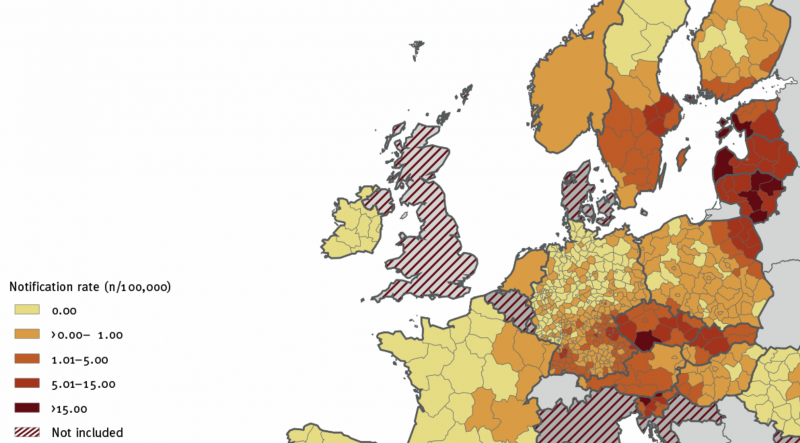impf-info.de
FSME - Studie der ECDC findet wenig echte Risikogebiete in Deutschland
Eine internationale Studie, die die Entwicklung der FSME in Europa während der Zeit zwischen 2021 und 2020 untersucht, bestätigt: STIKO und RKI gehen mit ihren bunten Risikokarten und den daraus zurechtgebogenen Impfempfehlungen meilenweit über international übliches Risikomanagement hinaus.
Die Studie zitiert ausdrücklich die WHO-Position einer allgemeinen Impfempfehlung bei Inzidenzen ≥ 5 Fälle/100.000 Einwohner/Jahr, findet diese Werte aber buchstäblich nur in einer Handvoll deutscher Landkreise erreicht.
Auch die international übliche - von der STIKO-Empfehlung abweichende - Strategie einer booster-Impfung frühestens nach 10 Jahren wird von den Autoren ausdrücklich gestützt.
Ebenfalls bestätigen die Autoren die geringe Sterblichkeit der FSME in Europa und die geringe Rate schwerer Verläufe mit bleibenden Komplikationen - relativieren letzteres aber als wahrscheinlich methodenbedingte Untererfassung ("bias")

Eurosurveillance | Spatiotemporal spread of tick-borne encephalitis in the EU/EEA, 2012 to 2020
By accepting you will be accessing a service provided by a third-party external to https://www.impf-info.de/

